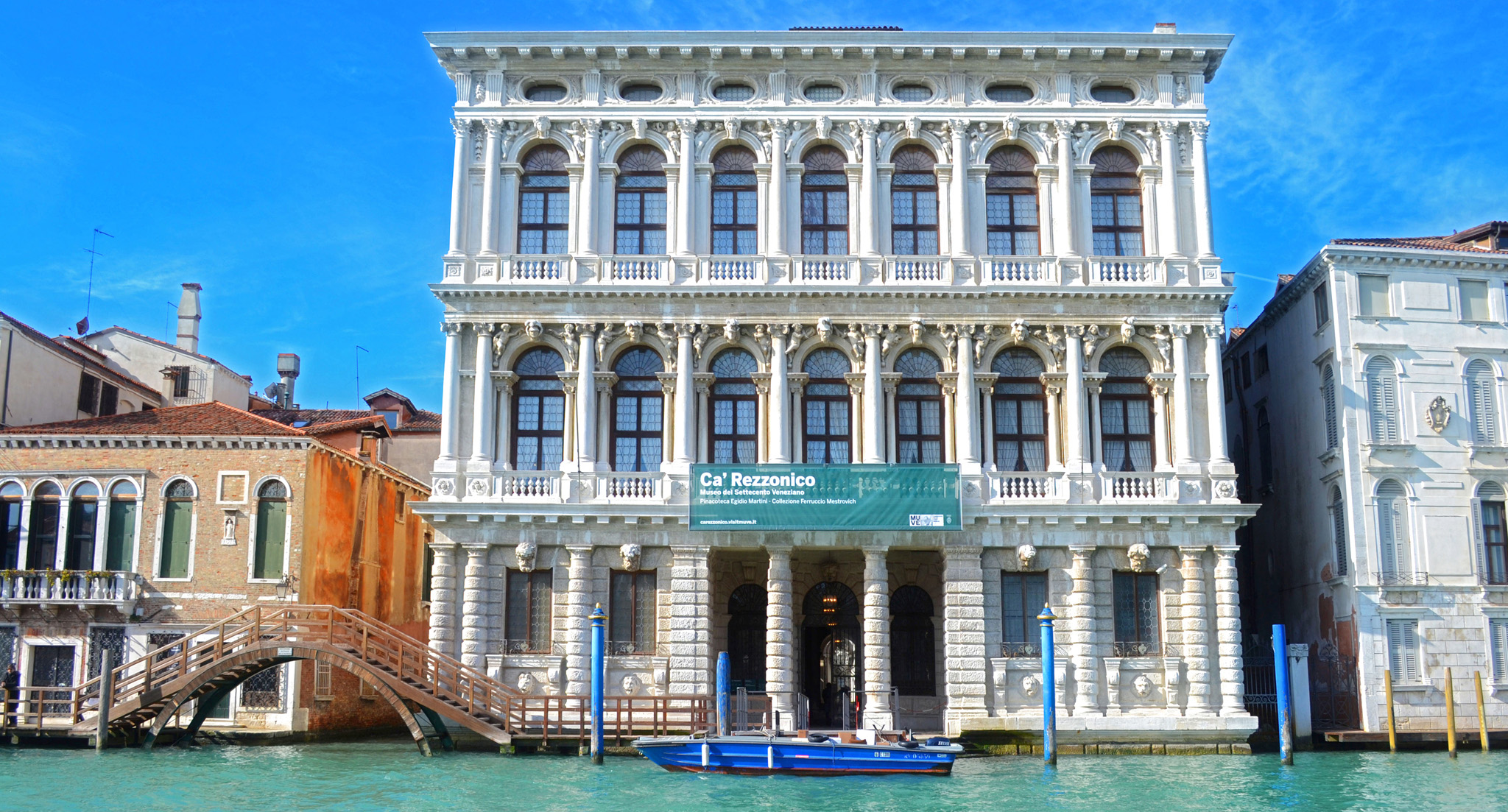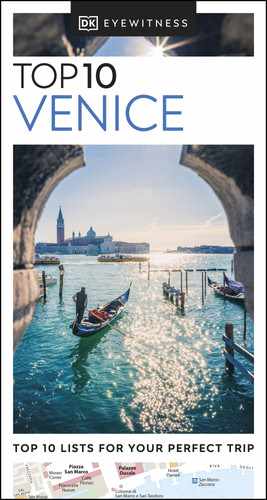VENICE PALACES
2. Ca’ d’Oro
The original lapis lazuli, vermilion and gold façade has long faded, but the breathtaking Gothic delicacy of this “golden palace” (see Ca’ d’Oro) is intact, with exquisite marble tracery and arcaded loggias crafted by 15th-century stonemasons.

Gothic architecture of Ca’ d’Oro
3. Ca’ Foscari
![]() Calle Foscari, Dorsoduro 3246 • Open for pre-booked guided tours only • www.unive.it
Calle Foscari, Dorsoduro 3246 • Open for pre-booked guided tours only • www.unive.it
Set on a strategic bend of the Grand Canal, this excellent example of late Gothic architecture has a series of mullioned windows facing the water, surmounted by an Istrian stone frieze. Once home to the long-ruling Doge Francesco Foscari, today it is part of the University of Venice.
4. Ca’ Rezzonico
![]() Fondamenta Rezzonico, Dorsoduro 3136 • Open 9am–6pm daily • Adm • www.visitmuve.it
Fondamenta Rezzonico, Dorsoduro 3136 • Open 9am–6pm daily • Adm • www.visitmuve.it
This glittering palace adorned with Tiepolo ceiling frescoes, majestic Murano glass chandeliers and elaborate carved period furniture is now home to the Museum of 18th-century Venetian Life.

The striking façade of Ca’ Rezzonico
5. Palazzo Vendramin-Calergi
This stately Renaissance residence built by known architects Lombardo and Coducci in the late 15th century was home to a string of noble families including the Cretan merchant Calergi in 1589. Another famed tenant was composer Richard Wagner, who spent his final years here. The palace is now home to the glittering City Casino.
6. Ca’ Dario
Framed multicoloured round stones (tondi) embellish this privately owned, asymmetrical palace dating from 1486. Ca’ Dario was built for Giovanni Dario, who was an ambassador to Constantinople, where he negotiated a peace treaty that brought long-term hostilities between Venice and the Turks to a temporary halt.
7. Palazzo Mastelli
![]() Rio della Madonna dell’Orto, Cannaregio 3932 • Closed to public
Rio della Madonna dell’Orto, Cannaregio 3932 • Closed to public
This eclectic delight, on a peaceful back canal of Cannaregio, was the abode of three merchant brothers from Morea on the Peloponnese from 1112. Their turbaned likenesses in stone adorn neighbouring Campo dei Mori. Lions, birds and a prominent camel can be picked out on the Gothic façade.
8. Palazzi Contarini degli Scrigni e Corfu
![]() Calle Contarini Corfu, Dorsoduro 1057 • Closed to public
Calle Contarini Corfu, Dorsoduro 1057 • Closed to public
A 15th-century residence, enlarged by architect Vincenzo Scamozzi for the 17th-century proprietor Contarini “of the coffers” (scrigni), so-called for the vast wealth of his family. The roof-top “folly” acted as a useful observatory for astronomers.
9. Palazzo Barbaro
![]() Rio dell’Orso, S Marco 2840 • Closed to public
Rio dell’Orso, S Marco 2840 • Closed to public
Cole Porter, Diaghilev, Monet and Whistler are just a few former guests of this private double palace, courtesy of the 19th-century Curtis family from Boston. Henry James wrote The Aspern Papers here and used it as the setting for The Wings of a Dove.
10. Palazzo Pisani-Moretta
![]() Ramo Pisani e Barbarigo, S Polo 2766 • Open for private functions only
Ramo Pisani e Barbarigo, S Polo 2766 • Open for private functions only
Venue of a fabulous masked ball during Carnival, when VIP guests glide up in gondolas to the candlelit Gothic façade on the Grand Canal. Tiepolo and Guarana contributed to the interior Baroque decorations.

Palazzo Pisani-Moretta
TOP 10 ARCHITECTURAL FEATURES OF A PALAZZO
1. Canal Entrance
This is where the family’s private gondolas were moored and visitors were received.

A typical canal entrance
2. Piano Nobile
The high-ceilinged first floor of a palazzo hosts the sumptuous salons and family’s living quarters.
3. Façade
Usually fronting a canal, this was the only exterior wall decorated with a costly stone overlay to impress visitors.
4. Funnel-Shaped Chimneys
These and many other variations punctuate rooftops, their long shafts often running along outside walls.
5. Kitchen
This was always located on the ground floor for practical reasons.
6. Central Well
This received filtered rain water for the palazzo’s main water supply.
7. Entrance Portal
The importance of the main entrance was usually indicated by the distinctive family crest.
8. Enclosed Courtyard
This bustling area, usually with store rooms, was often used for the family’s business transactions.
9. Altana Roof Terrace-Platform
These open-air areas were traditionally used for hanging out the washing or bleaching hair in the sun.
10. Land Access
Private gondolas rendered this relatively unimportant and hence, a narrow alley sufficed in its stead.
